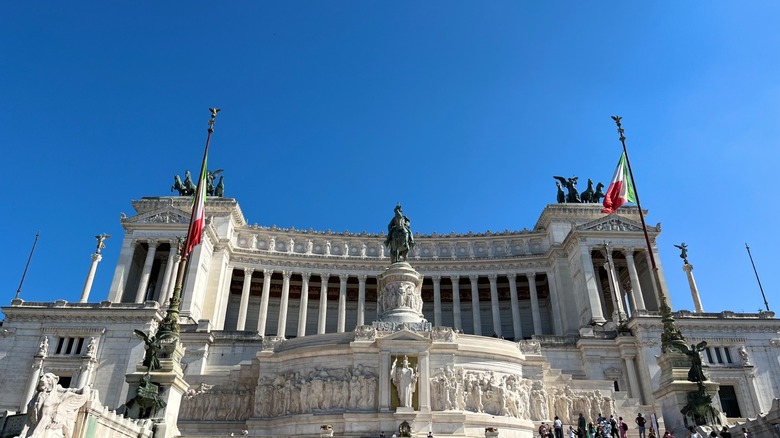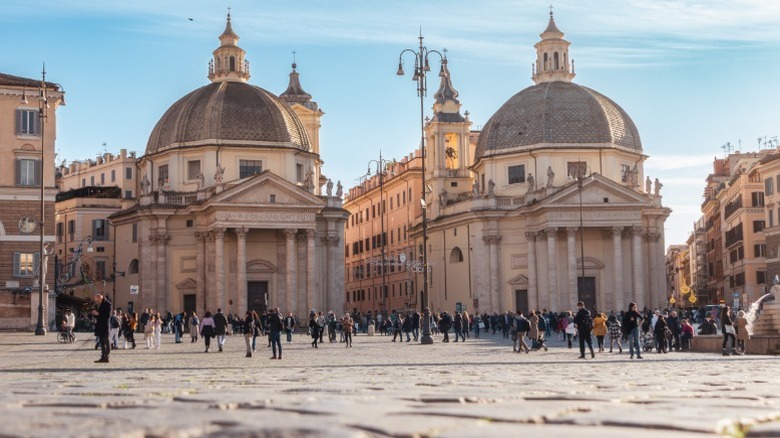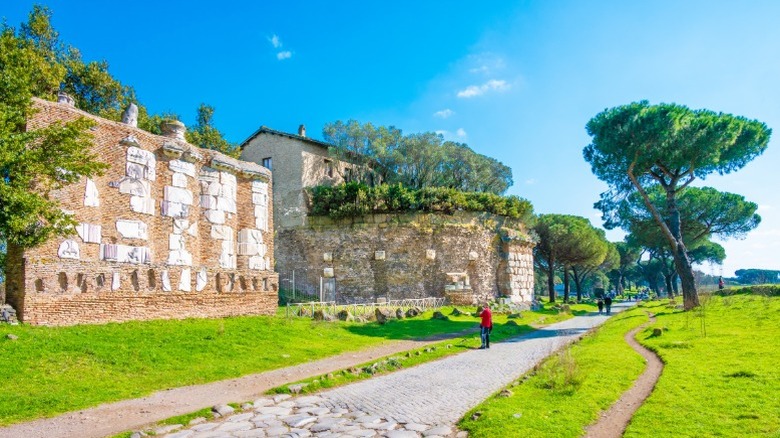The World's Most Walkable City In 2025 Is A Sun-Drenched Easy-To-Explore Capital Packed With Iconic Sights
We may receive a commission on purchases made from links.
La passeggiata, Italy's most treasured way of life, is a delightful amble along main streets and squares with no particular destination, simply imbibing fresh air, picking up the latest gossip, savoring street scenery, and of course, indulging in an unplanned gelato or aperitivo. It's no surprise, then, that Rome has topped GuruWalk's list of the world's most walkable cities for 2025 — a ranking based on traveler preferences, tour bookings, and page views on the site. This crowd-favorite capital is easy to explore and packed with iconic sights, best discovered one step at a time.
Each step is also a passage through nearly 2,800 years of some of the world's most intriguing history, a sensorial deep dive of breathtaking sights, vibrant flavors and aromas, animated conversations, and irrepressible energy. Considering it takes just an hour to stroll from one end of the historic center to the other, with most of its major monuments clustered together, an itinerary powered by foot is easy and efficient. New pedestrian paths such as Piazza Pia and Via Ottaviano around the Vatican City area, and Via di San Gregorio connecting the Colosseum to Circus Maximus, along with more under construction, make getting around even more pleasant. Keep in mind, though, that temperatures soar in sun-drenched southern Italian summers, so gear up with sunscreen, hats, and sunglasses if you visit during this season.
As you plot your Rome sightseeing agendas, allow space for cultural curiosities waiting around every corner, and moments for unplanned food and antique market dalliances. It's the best of both worlds, coming face-to-face with the city's unmissable attractions while rubbing shoulders with its vibrant daily life. As writer and dedicated flaneur Henry James reported in "Italian Hours," randomly roving Roman streets "served me to perfection and introduced me to the best things."
Rome is an easy-to-explore capital packed with iconic sights
Meet Rome the way many of its storied visitors — kings, merchants, artists, and travelers — once did: Through Porta del Popolo, the city's north gate. In Piazza del Popolo, orient yourself under the soaring 78-foot Flaminio Obelisk, then weave through the historic center via its three lively main streets to hit every essential landmark. In just 4 miles, you'll cover the likes of Trevi Fountain, the Pantheon, the Colosseum, and Circus Maximus — covering some of the 14 things you should do with only one day in Rome. Notable sidetracks include Campo de' Fiori, a beautiful market square that's Rick Steve's favorite in all of Rome, where the blink-and-you'll-miss l'Arco degli Acetari leads into one of the city's most picturesque courtyards. By the Spanish Steps, discover Galleria Sciarra, a perfect symmetry of Roman Art Nouveau. While noshing on the city's favorite street snacks like suppli, gelato, pizza al taglio, and maritozzo, be aware that eating and drinking at iconic landmarks could earn you a fine from municipal police.
Another can't-miss route begins at Ponte Regina Margherita. Stroll along the Tiber's riverside promenade to Ponte Umberto I, a dignified span of travertine marble and local limestone offering the most spectacular vista of Ponte Sant'Angelo and St. Peter's Basilica. From there, meander to Castel Sant'Angelo, then Vatican City and its exquisite richness of St. Peter's, the Sistine Chapel, and the Vatican Museums. You can easily spend the rest of the day wandering about Trastevere's ivy-draped alleys, followed by evening aperitivo that flows long into the night at Bar San Calisto, where everyone hangs out. You can also opt for an olive oil or wine tasting, or spend the night at Donna Camilla Savelli, a unique hotel with serene gardens, luxury, and old charm.
Rome is the world's most walkable city in 2025
Following in the footsteps of ancient soldiers and medieval pilgrims is an extraordinary way to fully immerse in the city's lore and connect with its denizens. The Seven Churches is a 15-mile pilgrimage, a spiritually significant 400-year-old ritual that also winds through neighborhoods off the tourist track. Between visiting the city's most significant and stunning basilicas, including Santa Maria Maggiore where Pope Francis rests, you'll get to see the vibrant immigrant-forward tapestry of Esquilino, marvel at the gentrifying industrial cool of Garbatella and Ostiense, and taste Testaccio, where Romans who know their food go to eat. The route is best completed over several days so you can linger as long as you like wherever captures your interest.
The Appian Way is Italy's 60th UNESCO World Heritage Site, first built in 312 B.C. and an awe-inspiring destination in Rome that's never crowded. Its first 10 miles lie within the Appia Antica archaeological park, paved by Rome's distinctive basalt sampietrini stones, incredibly intact even after centuries of use by chariots and warriors. Also still standing tall are aqueducts, public fountains, bridges, and a labyrinth of catacombs, feats of ancient Roman engineering prowess that unfurl across the landscape amid the city's trademark pine trees.
If you're short on time, one of the coolest ways to see Rome like a local is the city's free running groups with scenic routes, welcome to all fitness levels. Look forward to the finish line, as each session ends with convivial socializing with snacks, sips, and music.


